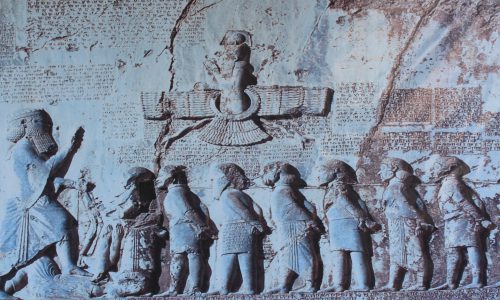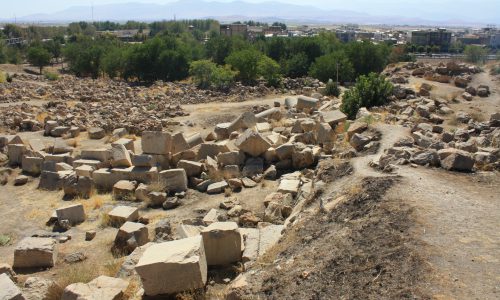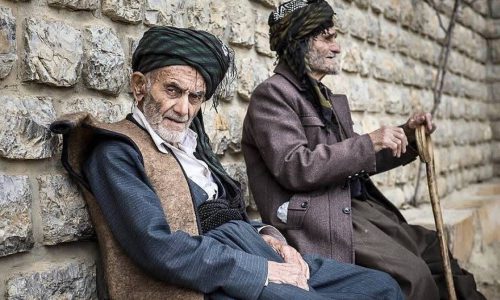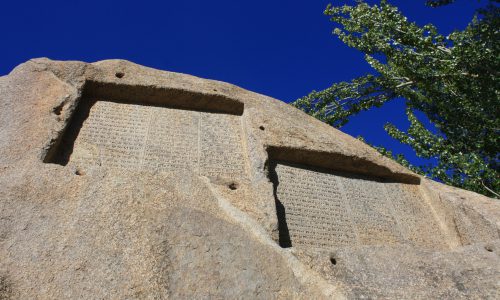Kermanshah Tours
Kermanshah Tours

At 09:00 in the morning, you will be picked up by your local guide and given a drive to Bisotun. 30 km away from the northeast of Kermanshah, there is a place with 28 National Heritage Sites named Bisotun (or Behistun). The inscription of Darius dating back to the Achaemenid dynasty is on the UNESCO World Heritage List. The statue of Hercules, 147 cm high, carved on the slope of the Bisotun Mountain is another distinguished historical work. Then, we will visit the caravanserai near Bisotun which is now a hotel. After that, we will back to Kermanshah and eat lunch in kebab shops near Taq-e Bostan. Here, we will visit another amazing must-see site in Iran named Taq-e Bostan. It is a collection of rock reliefs and inscriptions dating back to the Sassanid era in the southwest of Kermanshah. It is composed of two arches in large and smaller sizes and some rock reliefs. The reliefs depict the coronation of the kings Khosrow Parviz, Ardashir II, Shapur II, and Shapur III. An eye-catching landscape of mountains and a spring has turned this place into a pleasant attraction. Bisotun and Taq-e Bostan are the two main attractions on Kermanshah tours.

Excursion Tour to Kangavar
In the morning at 09:00, your local guide will pick you up and drive to Kangavar (96 km). It is one of the main sites included in most Kermanshah tours. In Kangavar, on an elevated rocky platform, are the remnants of a majestic structure that belongs to the pre-Islamic era and was known as the Anahita Temple. The name of this temple is depicted from Anahita (Nahid) who was a deity and guard angel of water, abundance, and blessing. Undefined, some believe that the structure dates back to the Parthian era, whilst upon this relic the evidence of this period and the early Islamic era can also be noted. According to scientific research, the architectural characteristics of this temple have acquired inspiration from that of the Achaemenian age. The main structure of the Anahita Temple is a quadrilateral one. Its ramparts are 230 meters in length, and its thickness is 18 meters in most of the parts which reveal the archaic grandeur and magnificence of this structure. The stairway of the temple is bilateral and closely attached to the wall. The difference between the lowest and highest points of the structure is 30 meters and it is in the form of steps, similar to the Achaemenian structures. At the foot of the eastern wall of the structure, there is a cemetery that is related to the Parthian era. It is noted that the deceased have been buried in such a way as to face the Anahita structure. Then, you will back to Kermanshah City visiting one of the Tekiyehs based on your choice, Biglar Beigi Tekyeh or Moavel al molk Tekyeh. One is famous for its dazzling mirror-tiled central dome room and the other one is famous for its beautiful tiles.

Experience of Kurdish Lifestyle and Culture in Hawraman Village
Some Kermanshah tours, just like this one, offer an opportunity to visit parts of Kurdistan as well. At 07:30 in the morning, you will be picked up by your local guide and driven to Ghoori Ghale Cave (Paveh). It is one of the natural and tourist attractions in Iran which, in addition to being some 65 million years old, holds the title of the largest water cave in Asia and the longest cave of Iran. One of the most important features of the Ghoori Ghale Cave is its width which has gained first place among the other ancient aquatic caves. The presence of forests of oak trees, mountain figs, and wild almonds along with animals such as foxes, rabbits, and wild goats that live around the cave have created a special effect in the area. We will drive to the traditional Kurdish village of Hawraman (Oramanat Takht UNESCO Heritage Site) in the west of Iran and stay one night in Bolbar Village Ecolodge to Experience rural life in Kurdistan. The village houses are generally made of stone and stair-like fashion, with beams covering the ceilings. These houses are arranged such that the roof of one house is the courtyard of the other. The climate of this region in spring and summer is very pleasant and it is very cold in winter. The Oramanat Takht Village is one of the attractive rural areas of Kurdistan which besides its panoramic views has valuable tourism capacities because of the annual performance of an ancient and wonderful ceremony of Pir Shalyar. The ceremony is segregated into two main parts. The first is the wedding celebration, held in February and the second part is called Komsai, celebrated in May each year. Ancient fire temples and remnants of this region indicate that the inhabitants were Zoroastrians before converting to Islam. The Sirvan River flows from the deep valleys of this region and enters Iraq. Here, the lands are covered with walnut, pomegranate, fig, and mulberry trees. Despite difficult climatic conditions, the inhabitants abide by their traditions. The inhabitants of the Uraman Takht are Sonni Muslims from the Shafei sect. From other sacred sites, we can mention the Oihang and Abdollahi mosques, and the tomb of “Loskeh Hijij” which is highly respected by the people of this region and other regions of Kurdistan.

Kermanshah to Hamadan Tour with Stop at Kangavar and Ganjnameh
In the morning at 09:00, your local guide will pick you up and drive to Kangavar (96 km). In Kangavar, we will visit Anahita Temple. The name of this temple is depicted from Anahita (Nahid) who was a deity and guard angel of water, abundance, and blessing. Undefined, some believe that the structure dates back to the Parthian era, whilst upon this relic the evidence of this period and the early Islamic era can also be noted. Then, we will continue to Hamadan to visit Ganjnameh. Near the waterfall of GanjNameh, at the end of a small valley near the ancient road between Ecbatana and Bisotun, 8 kilometers southwest of modern Hamadan, are two almost identical Achaemenid inscriptions by Darius I the Great and Xerxes. Both are in three columns of twenty lines and three languages: Persian, Elamite, and Babylonian. They both begin with praise for the supreme god Ahuramazda, continue with the genealogy of the maker, and end with the royal titles. There is one striking difference, however: Darius calls Ahurmazda “a great god”, while in Xerxes’ text, he is called “the greatest of all gods”. Then, we will enter Hamadan city and transfer to your hotel at the end of the tour.
